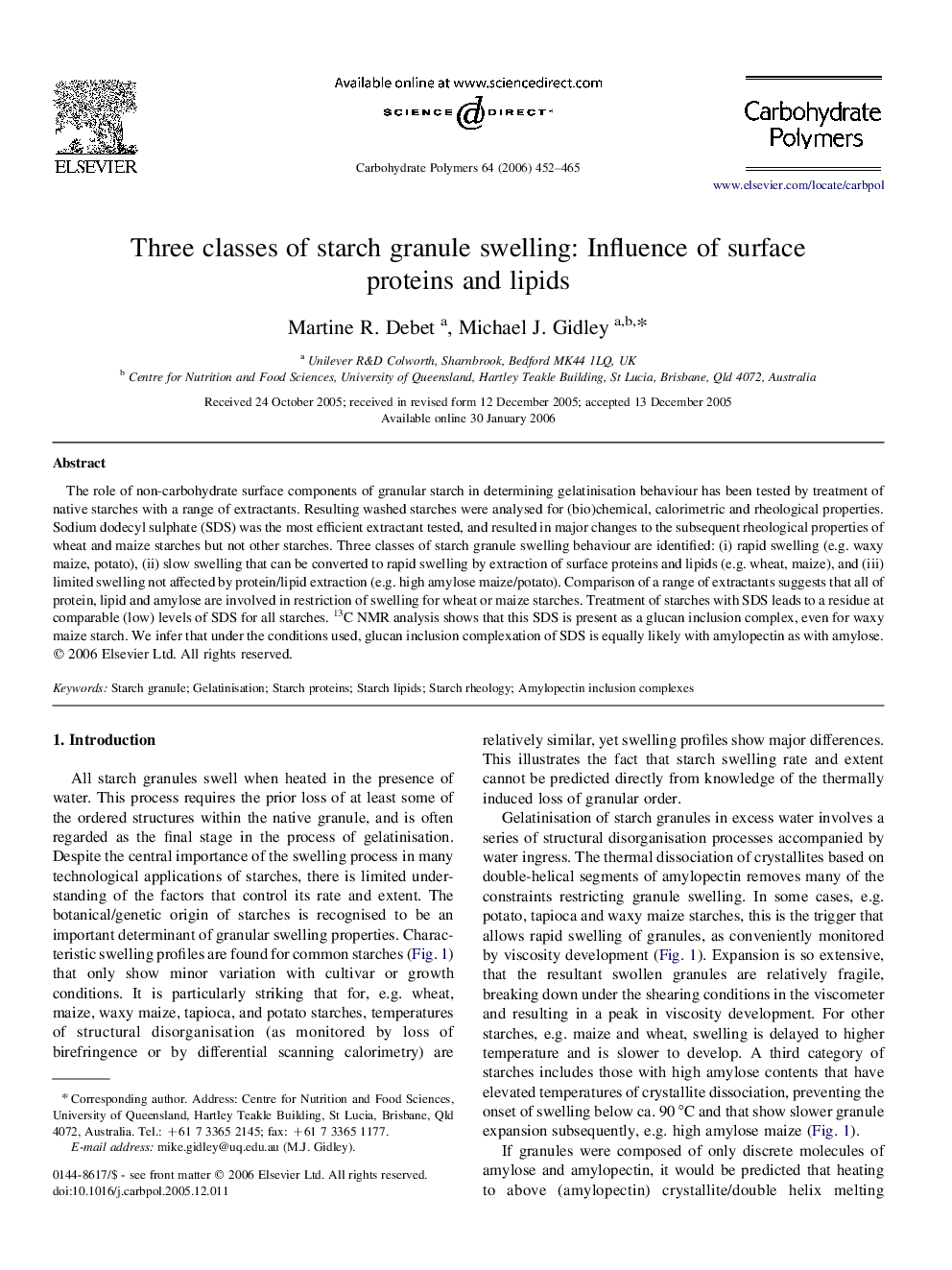| Article ID | Journal | Published Year | Pages | File Type |
|---|---|---|---|---|
| 1385403 | Carbohydrate Polymers | 2006 | 14 Pages |
The role of non-carbohydrate surface components of granular starch in determining gelatinisation behaviour has been tested by treatment of native starches with a range of extractants. Resulting washed starches were analysed for (bio)chemical, calorimetric and rheological properties. Sodium dodecyl sulphate (SDS) was the most efficient extractant tested, and resulted in major changes to the subsequent rheological properties of wheat and maize starches but not other starches. Three classes of starch granule swelling behaviour are identified: (i) rapid swelling (e.g. waxy maize, potato), (ii) slow swelling that can be converted to rapid swelling by extraction of surface proteins and lipids (e.g. wheat, maize), and (iii) limited swelling not affected by protein/lipid extraction (e.g. high amylose maize/potato). Comparison of a range of extractants suggests that all of protein, lipid and amylose are involved in restriction of swelling for wheat or maize starches. Treatment of starches with SDS leads to a residue at comparable (low) levels of SDS for all starches. 13C NMR analysis shows that this SDS is present as a glucan inclusion complex, even for waxy maize starch. We infer that under the conditions used, glucan inclusion complexation of SDS is equally likely with amylopectin as with amylose.
